Keeping your lawn lush and vibrant isn’t merely about frequent mowing. The secret lies in timely and proper watering – a misunderstood and underestimated task.
“When to start watering the lawn?” – is a question every lawn owner grapples with, only to be met with vague and conflicting answers.
The timing and amount of watering can dramatically influence your lawn’s health and appearance. Factors such as soil type, climate, and grass species play crucial roles in these decisions.
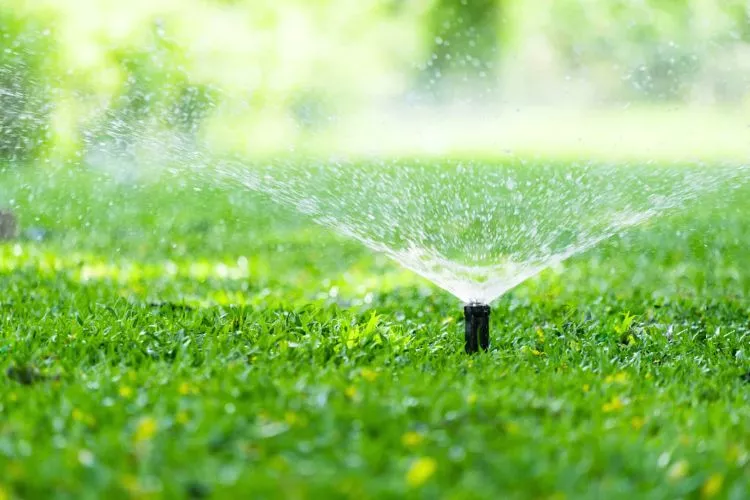
However, understanding these parameters can be daunting. This is where our comprehensive guide steps in, simplifying these complexities and aiding you in achieving that coveted green, robust lawn.
So, we’ve got you covered whether you’re battling arid conditions, waterlogged patches, or the fear of under or over-watering!
Let’s demystify lawn watering together.
Table of Contents
3 Factors to Consider Before Watering
Before embarking on your journey to maintain the perfect lawn, it’s critical to grasp the key elements that directly influence your watering strategy.
These factors are the pillars that support your lawn’s overall health and vitality. They consist of the type and composition of your soil, the climatic and weather conditions you’re in, and the characteristics of the grass that carpets your lawn.
Understanding these elements ensures that you’re watering your lawn appropriately and conserves water and maintains the balance of your local ecosystem.
Soil type and composition
One of the most significant determinants of when and how often to water your lawn is the type and composition of your soil. Like the foundation of a house, the soil provides the base for your lawn, impacting its health, growth, and vibrancy.
There are three primary types of soil: sandy, clay, and loamy. Each has its distinct characteristics, influencing its ability to retain water and your watering schedule.
With its large, coarse particles, Sandy soil is known for its loose texture and low water-holding capacity. It drains rapidly after watering, leading to faster evaporation. This means your lawn may need more frequent watering to avoid drying out.
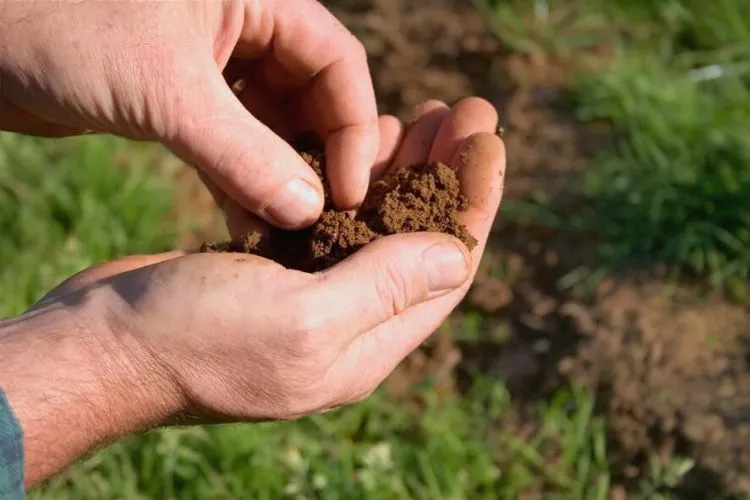
On the other end of the spectrum is clay soil, composed of tiny, tightly-packed particles. Clay soil retains water for longer due to its dense structure, but it can easily become waterlogged, depriving the grassroots of necessary oxygen.
In such cases, careful monitoring and less frequent watering are required to avoid drowning your lawn.
Loamy soil is the gardener’s holy grail. A balanced mixture of sand, silt, and clay, loamy soil combines the best of both worlds. It holds water adequately while providing good drainage, quaking your lawn’s thirst without waterlogging the roots.
Consequently, a lawn with loamy soil usually requires a balanced watering schedule, not too frequent nor too scarce.
Understanding your soil type is the first step toward establishing an effective watering routine. Whether sandy, clay, or loamy, each soil type requires a unique approach to ensure your lawn remains hydrated and healthy.
Climate and weather conditions
Your area’s climate and weather conditions play an integral role in determining when to start watering your lawn and how often to do so. These factors can significantly affect your lawn’s watering needs, from rainfall patterns to wind effects and evaporation rates.
Rainfall is the most natural form of irrigation for your lawn. However, rainfall patterns vary greatly based on your geographical location.
Some areas may receive regular rainfall, reducing the need for additional watering. In contrast, arid regions might demand more frequent watering due to scarce rainfall.
Keeping an eye on local weather forecasts and understanding the annual rainfall patterns in your area can help you fine-tune your watering schedule.
Temperature and humidity also factor into this equation. Higher temperatures and lower humidity lead to faster evaporation rates, which could mean your lawn requires more frequent watering.
On the other hand, water evaporates slower in cooler and more humid climates, and your lawn retains moisture for longer periods, reducing the need for frequent watering.
Wind plays a somewhat dual role. Light winds can aid in distributing water evenly across your lawn. However, strong winds can cause rapid evaporation and uneven water distribution, making certain areas parched.
Grass type and lawn characteristics
The type of grass that covers your lawn and its specific characteristics also have a significant say in your watering strategy.
Different grass types have different water requirements, and understanding these needs can make your watering schedule more effective and your lawn more lush.
Cool-season grasses, like Kentucky bluegrass or ryegrass, are typically found in northern regions. These varieties thrive in cooler temperatures and usually require more water during the warm summer months to combat heat stress.
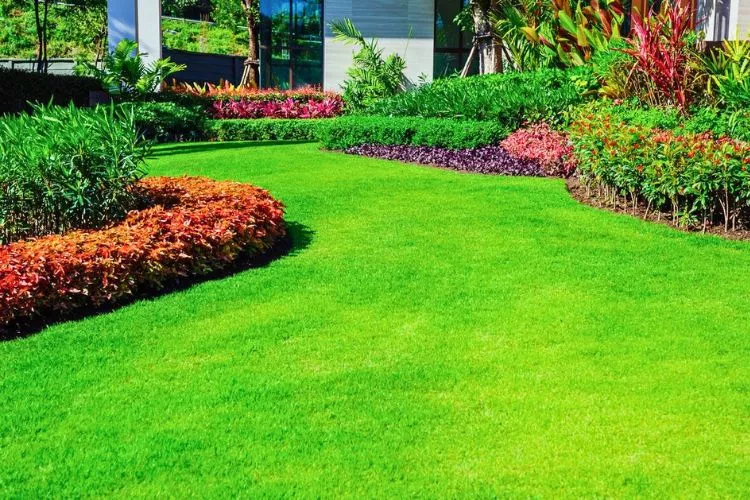
On the other hand, warm-season grasses such as Bermuda and Zoysia, common in southern areas, are more drought-resistant and can survive on less frequent watering, particularly during cooler months.
The physical characteristics of your lawn also come into play. A large, open lawn may require more water, simply due to its size, compared to a smaller lawn. Similarly, lawns with a slope or incline can impact water absorption and distribution.
Water tends to run downhill, potentially leaving the higher parts of your lawn dehydrated and the lower areas waterlogged. In such cases, shorter, more frequent watering can help ensure even distribution and absorption.
Identifying your grass type and understanding your lawn’s unique characteristics are vital in establishing an effective watering schedule.
Tailoring your watering practices to suit these aspects ensures your lawn remains green and healthy and water is utilized efficiently.
When To Start Watering The Lawn? (Common Signs)
As you’ve learned, several elements influence the timing and frequency of watering your lawn. Yet, one might ask – “How do I know it’s time to bring out the garden hose or switch on the sprinkler system?”
After all, a keen eye and timely action can be the difference between a parched, browning lawn and a lush, vibrant one. This section will explore common signs that your lawn is thirsty and ready for a drink.
These visual and tactile cues will guide you in detecting the right moment to start watering your lawn, ensuring it gets the right amount of moisture just when it needs it. Let’s learn how to listen to what your lawn is telling you!
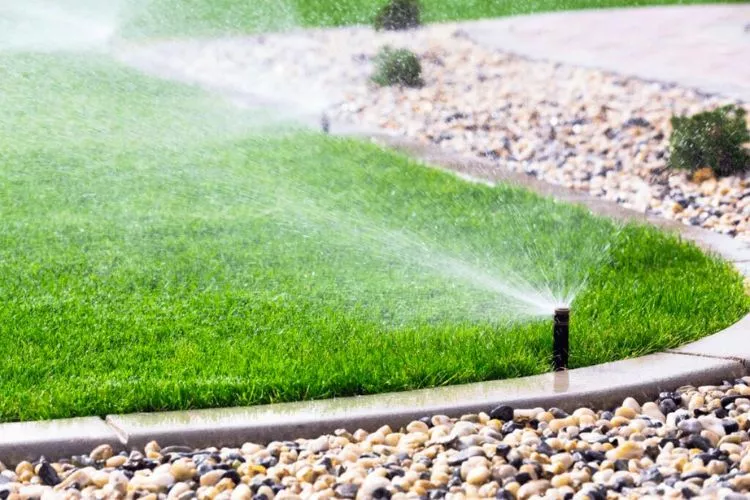
Visual cues of water stress
Your lawn speaks to you through visual signs, which can help you discern when it’s time to water. One of the primary visual cues of water stress is a change in color and the wilting of grass blades.
Under normal conditions, healthy grass blades are robust and vibrant green. However, when your lawn is thirsty, it shows signs of stress. The lush green starts fading to a dull, pale green, eventually turning yellow or brown if water deprivation continues. This color change is your lawn crying out for hydration.
Another common visual cue is wilting. Water-deprived grass blades lose their rigidity, appearing folded or curled up. This wilting is another plea for water, indicating that the grass struggles to maintain its cellular structure due to a lack of hydration.
A less obvious but equally telling sign is footprints or tire tracks remaining on the grass. When your lawn is well-hydrated, the grass blades are resilient and spring back quickly after being stepped on.
But when your lawn needs water, the grass will take longer to bounce back, leaving noticeable footprints or tire tracks behind.
These visual cues are your lawn’s SOS signals, alerting you that it’s time to bring out the watering cans or switch on the irrigation system. Paying attention to these signs can help ensure your lawn receives water exactly when needed, promoting a healthy and beautiful lawn.
Testing soil moisture
In addition to visual cues, another reliable way to determine when to water your lawn involves testing the soil’s moisture levels. This can be done using a moisture meter, probe, or manual methods.
Moisture meters or probes are handy tools for assessing soil moisture levels accurately. These devices are pushed into the soil and provide a reading on a scale, usually ranging from dry to wet.
If the meter reads toward the lower end of the scale, it indicates that your lawn needs watering. These tools can be particularly useful in larger lawns where visual cues might be harder to spot.
However, if you don’t have a moisture meter, you can still assess soil moisture levels manually. One simple method is the screwdriver test. Take a long screwdriver and push it into the ground. If it goes in easily, your soil is likely well-hydrated. If you face resistance, it’s a sign your lawn could use some water.
Another manual method involves taking a small soil sample below the surface from about 6 inches (approximately 15 centimeters). If the soil crumbles and feels dry, it’s watering time. If it feels damp and holds together, your lawn is still well-hydrated.
Whichever method you choose, testing soil moisture levels can provide a more precise understanding of when your lawn needs water. By integrating these practices into your lawn care routine, you can ensure your lawn gets the right amount of water when needed.
How to Establish a Watering Schedule?
Knowing when your lawn needs water is only half the battle. The next step is establishing a reliable watering schedule that maintains your lawn’s lush appearance and vibrant health.
You might wonder, “How often should I water?” or “What time of day is best?” Well, establishing a watering schedule is part art and part science. It involves understanding your lawn’s unique needs and responding to them effectively while considering environmental factors and conserving water.
In this section, we’ll guide you through establishing a watering schedule that works for your lawn and helps you nurture a lawn you’ll love and be proud of. So, let’s dive in!
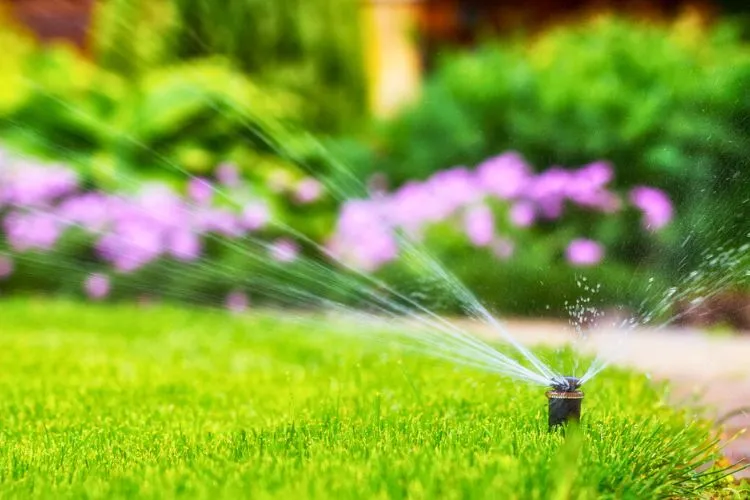
General guidelines for lawn watering
Establishing a watering schedule begins with understanding some general guidelines. It’s crucial to strike a balance when it comes to watering frequency and duration. You don’t want to starve your lawn of water but don’t want to drown it.
As a general rule of thumb, watering your lawn deeply but infrequently is recommended. This practice encourages your grass to develop a deep and robust root system, enhancing its resilience in dry conditions.
Typically, watering your lawn 1 to 1.5 inches (about 2.5 to 3.8 centimeters) per week, divided into two or three watering sessions, should suffice.
However, remember that this is just a starting point. The precise frequency and duration of watering will depend on factors like soil type, grass species, and local climate conditions, which we discussed earlier.
Overwatering is a common pitfall to avoid. Watering your lawn excessively can lead to water waste and other problems, like disease susceptibility and shallow root growth.
If you’re using a sprinkler system, ensure it’s not over-spraying or causing water to pool or run off onto pavements.
Moreover, keep an eye on rainfall. You might not need to water for a while if you receive significant rain. Installing a rain gauge in your yard can help you track how much natural watering your lawn is getting, reducing the need for additional irrigation and conserving water.
Time of day for watering
Now that we’ve established the general guidelines for watering frequency and duration let’s talk about the best time of day to water your lawn. The goal is to ensure maximum water absorption and minimize evaporation, and the time of day plays a crucial role in achieving this.
The optimal time to water your lawn is early morning, preferably before sunrise. The reason? Morning temperatures are cooler, and winds are typically calmer, reducing evaporation. This allows the water to soak deep into the soil and be absorbed by the grassroots before the sun’s heat can cause it to evaporate.
If you can’t water in the early morning, the next best time is late evening. However, aim to water the lawn early enough to dry before nightfall. Watering too late in the evening could leave your lawn damp overnight, potentially encouraging fungal diseases.
In some climates, especially in the hotter regions, night watering might be preferable to avoid excessive evaporation during the day. However, in these cases, you must monitor your lawn closely for signs of disease.
As with everything else in lawn care, it’s crucial to balance the timing of watering with your lawn’s specific needs and local climate conditions.
The key is to ensure that your grass gets the most out of every drop of water, contributing to a healthier, more resilient lawn.
Watering techniques and equipment
In addition to knowing when to water, it’s equally important to consider how you water. The method you choose can significantly impact the effectiveness of your watering and the health of your lawn.
Let’s delve into some common irrigation methods and how to ensure proper water distribution and coverage.
Sprinklers are a popular choice for many homeowners. They’re easy to set up and can cover a large area effectively. Various types of sprinklers are available, from oscillating and rotating models to in-ground sprinkler systems.
When using a sprinkler, aim to position it so that water is evenly distributed and not wasted on areas like driveways or sidewalks.
Drip irrigation is another method to consider. This method is slower, as it delivers water directly to the root zone of your grass. It’s highly efficient, minimizing water waste through evaporation or runoff. Drip irrigation can be an excellent choice for sloping lawns or specific zones within your lawn that require targeted watering.
Hand watering with a hose might be the most practical method for small or irregularly shaped lawns. It gives you complete control over where the water goes, but remember to water deeply to encourage robust root growth.
Regardless of your chosen method, even water distribution and coverage are critical. Pay attention to the reach of your watering method to ensure all parts of your lawn receive adequate hydration.
Adjust your watering technique or equipment accordingly if you notice dry patches or overly wet areas.
In conclusion, the right watering technique and equipment can make your watering schedule more efficient and your lawn more lush and resilient. By understanding these elements and how they work together, you’re one step closer to mastering the art of lawn care.
Adjusting Watering Practices
Just like the changing of the seasons, your lawn’s watering needs aren’t static. As we transition from spring to summer, fall, and even winter, the amount and frequency of watering required can vary significantly.
Adjusting your watering practices accordingly is essential to sustain a healthy and beautiful lawn year-round. This section will explore how to make these necessary adjustments, considering the changing seasons and the ongoing assessment of your lawn’s health and growth.
So, let’s delve into how to adapt your watering practices for your lawn’s changing needs, ensuring it always gets the right amount of water at the right time every season.
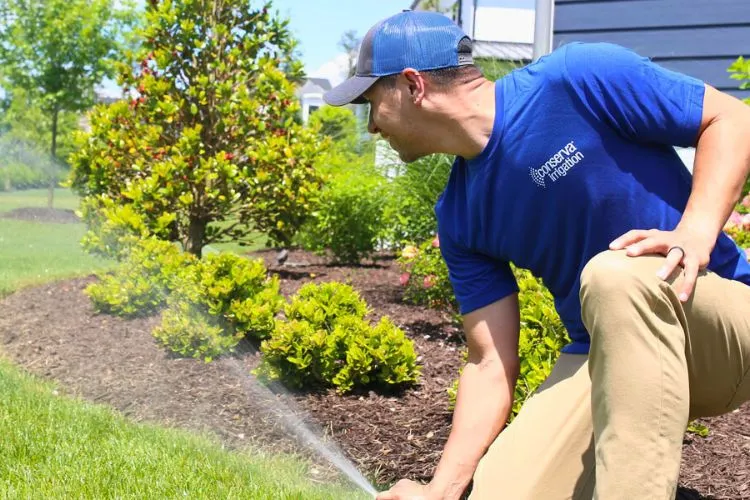
Adaptations for changing seasons
Understanding the impact of seasonal changes on your lawn’s watering needs is crucial for maintaining its health and vitality. Each season presents unique challenges and requirements that should guide your watering practices.
Spring often signals the beginning of the lawn care season. As temperatures rise and your grass emerges from winter dormancy, it’s important to provide regular, deep watering to encourage robust root growth.
However, spring often brings plenty of rainfall, so adjust your watering schedule to avoid overwatering your lawn.
As we move into the summer, lawns typically require more water due to increased temperatures and evaporation rates. Frequent, deep watering helps your grass survive the intense summer heat. However, remember to water early or late evening to minimize evaporation.
Fall brings cooler temperatures and typically more rainfall, reducing your lawn’s watering needs. It’s the perfect time to allow your lawn to recover from the summer and prepare for winter. Continue to water if necessary, but slowly taper off as winter approaches.
Winter watering depends on your climate. In areas with cold winters, your grass enters a dormant state, and watering is usually unnecessary. However, occasional watering might still be required in warmer winter climates, especially during dry spells.
In all seasons, remember to consider the natural rainfall your area receives. Utilize a rain gauge to measure the rainfall your lawn is getting, and adjust your watering schedule accordingly to avoid overwatering.
Assessing lawn health and growth
An integral part of maintaining a vibrant lawn involves continually assessing its health and growth. It’s not just about watering your lawn but understanding how it responds to your watering practices. This continuous observation and adjustment ensure that your lawn thrives in varying conditions.
Begin with monitoring grass growth patterns. A healthy lawn will have consistent, robust growth across the area. If you notice uneven patches or areas where the grass is thinning, it might indicate that those sections are overwatered or under-watered.
Another sign to look for is the color of your grass. Healthy grass typically has a lush, green color. If you start seeing yellow or brown patches, it could mean that your lawn is in distress, potentially due to improper watering.
Pay close attention to how your lawn responds after watering. Does it appear vibrant and stand tall? Or does it look saturated and limp? The response of your lawn post-watering can give a lot of insights into whether your watering schedule is working or needs adjustment.
Don’t forget to inspect the soil too. If it’s always soggy, you might be overwatering. On the other hand, if it’s hard and cracked, your lawn might be crying out for more water. Remember, the goal is to keep the soil moist but not waterlogged.
In conclusion, consistently assessing your lawn’s health and growth helps fine-tune your watering practices. Be observant, be flexible, and remember that the healthier your lawn, the more resilient it will be to weather changes, pest invasions, and diseases. Your lawn’s health is a testament to your care, so let’s keep it at its best!
Water Conservation Tips for Lawn Watering
While maintaining a lush and healthy lawn is important, it’s equally crucial to consider the environmental impact of our watering practices. Every drop counts when it comes to conserving water, and lawns can consume a significant portion of our household water usage.
But fear not! There are smart ways to nurture your lawn and uphold water conservation principles. In this section, we’ll share some tips and savvy strategies for watering your lawn efficiently without sacrificing its health and beauty.
Let’s dive into how you can maintain your verdant oasis and be a friend to our precious water resources simultaneously.
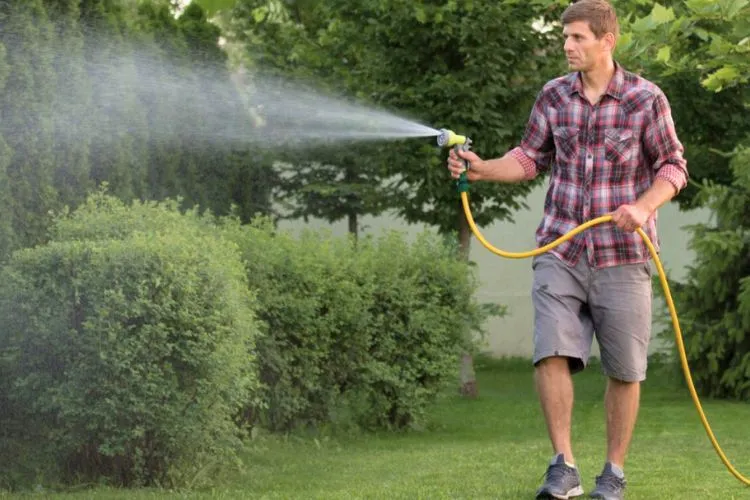
Efficient water usage practices
Efficient water usage practices are vital for preserving our water resources and maintaining a healthy lawn. You can employ several strategies to ensure you’re using water effectively and responsibly.
One great method is the use of mulch. Applying a layer of organic mulch around your plants and over the soil surface can significantly reduce evaporation, helping to retain precious moisture in the soil.
Mulch acts as a protective barrier, preventing the sun’s rays from directly hitting the soil and causing water to evaporate quickly. This method is particularly effective in garden beds or around trees but can also be used in thinly grassed areas.
Avoiding water runoff and overspray is another essential practice. Overwatering not only wastes water but can also cause nutrients to be washed away from the soil, leading to poor lawn health.
Water your lawn slowly and evenly to prevent runoff, giving the soil enough time to absorb the water. Sprinkler placement plays a crucial role in preventing overspray. Ensure that the water is directed onto your lawn, not the pavement or driveway.
Lastly, consider watering deeply but less frequently. This practice encourages your grass to develop a deep root system, making it more resilient and less reliant on frequent watering.
By integrating these practices into your lawn care routine, you can make significant strides in water conservation while ensuring your lawn remains healthy and verdant. It’s a win-win situation for you, your lawn, and the environment!
Smart irrigation systems and technologies
In this modern age, technology has become a pivotal ally in our quest to conserve water while maintaining a lush lawn. Smart irrigation systems and technologies can help optimize water usage, reducing wastage and ensuring your lawn gets the exact amount of water it needs.
One such technology is the use of automatic timers. These devices allow you to program your watering schedule, providing your lawn with consistent and timely watering. This can be particularly useful for busy homeowners who might not have the time to manually water their lawns or those who travel frequently.
Even more impressive are moisture sensors. These nifty devices are placed into the soil and measure the moisture content in real time. If the soil’s moisture level drops below a certain threshold, the sensor triggers the irrigation system to water. This ensures your lawn gets water only when needed, preventing overwatering and underwatering.
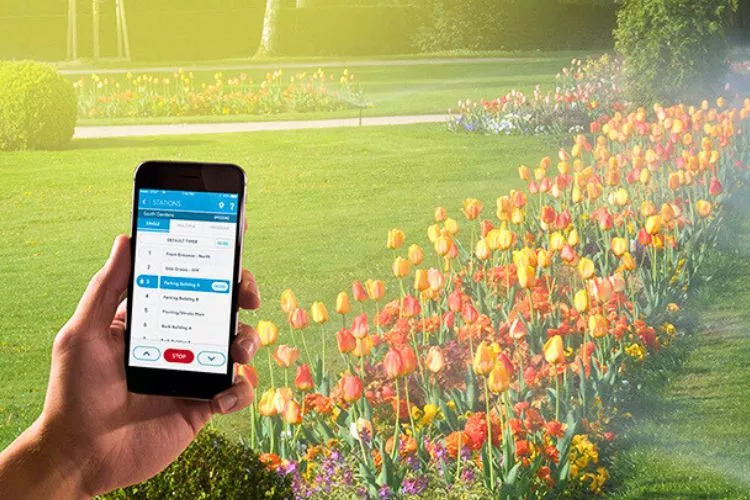
But technology isn’t just about fancy gadgets. Consider implementing age-old techniques such as rainwater harvesting. Installing rain barrels or a more comprehensive rainwater harvesting system allows you to collect rainwater for watering your lawn and other outdoor plants.
This practice not only conserves water but also makes use of a natural and free water source.
By incorporating smart irrigation systems and technologies into your lawn care routine, you can maintain a healthy and vibrant lawn while making every drop of water count. So why not explore these options? Your lawn, and the planet, will thank you.
Frequently Asked Questions (fAQs)
How often should I water my lawn?
Typically, water your lawn 1-2 times a week. But this can vary based on climate, season, and grass type.
How much water should I apply during each watering?
Aim to wet your soil to a depth of 6 inches (15 cm). This usually requires about 1-1.5 inches (2.5-3.8 cm) of water.
What are the signs of overwatering?
Signs of overwatering include yellowing leaves, wilting despite wet soil, blight or mold development, and a rotten smell from the soil.
Can I rely solely on rainfall to water my lawn?
In high rainfall areas, yes. But in dry climates, supplementing with watering is typically necessary for lawn health.
Conclusion:
To wrap it up, proper lawn watering is crucial for a healthy, vibrant lawn. Remember your soil type, local weather conditions, and grass species. Be vigilant for signs of water stress and adjust watering schedules accordingly. Consider using modern irrigation technology for efficiency.
We hope that this guide has been helpful. You can read about similar topics here on our website. Check back again soon for more.


